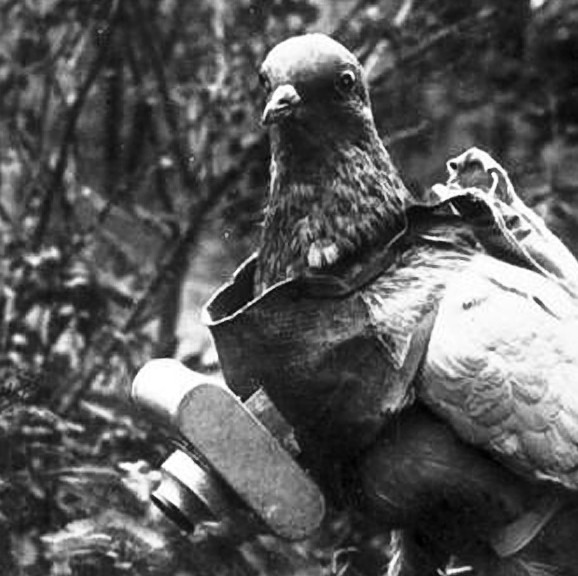Humans are visual creatures; we like seeing beautiful things, not just beautiful but also unusual and strange things around us. We are delighted to know those peculiar creatures, events, and phenomena exist. Or sometimes, we ourselves create them.
We have invented and created ways to see the seemingly unreachable things and hardly seen by our limited sight with our love to be surrounded by fantastic and beautiful things. Perhaps, the invention of drone cameras is proof of this desire.
Not everyone can afford to pay a flight just to see the scenic view from the atmosphere, or just to make us imagine what it looks like to be up in the sky.
Before the modern and advanced technology that we enjoy today, photography was once an art for both humans and birds. Far long before drone cameras exist, Pigeon Photography did. And it was extraordinary but pretty amazing!
We owe our aerial photography to the first man who discovered this. German apothecary Julius Neubronner had invented this idea of taking photos from above in 1907 but not with the drone camera but with what he called pigeon photography.
With a lightweight time-delayed miniature camera attached to an aluminum breast harness, Neubronner connected his design to homing pigeons who amazingly capture aerial photographs on their flight.
The history of Pigeon Photography
In 1903 in Kronberg’s German town, near Frankfurt, Julius Neubronner continued his father’s practice half a century earlier. He received prescriptions from a sanatorium in nearby Falkenstein via pigeon post. By the same method, he delivered urgent medications up to 75 grams. Some pigeons were even with his wholesaler in Frankfurt to profit from faster deliveries.
Due to an instance that one of his pigeons lost its orientation in fog and mysteriously arrived, well-fed, four weeks late, Neubronner got the idea of equipping them with an automatic Camera for Bird Photography to trace their paths.
This started the merge of his two hobbies: carrier pigeons and amateur photography. He started developing a miniature light camera that could fit a pigeon’s breast through a harness and an aluminum cuirass. Initially, pigeons were trained with wooden camera models weighing 30 to 75 grams (1.1 to 2.6 oz).
Neubronner took an aerial photograph by carrying a pigeon to a location up to about 100 kilometers (60 mi) from its home. The pigeon was equipped with a camera and released. 4Being relieved its burden, and the pigeon would typically fly back home on a direct route at 50 – 100 meters height.
The camera’s pneumatic system controlled the time delay before a photograph was taken. The dovecote (the structure that houses pigeons or doves) had a spacious, elastic landing board and a large entry hole to lodge the burdened pigeon.
This pigeon photography became attractive for aerial reconnaissance due to its military potential. It had provided encouraging results from battlefield tests in the First World War. However, the military interest in pigeon photography slowly vanished, and Neubronner abandoned his experiments. Yet the supplementary technology of mobile dovecotes for messenger pigeons had the greatest impact.
In the 1930s, Swiss clockmaker and German and French militaries briefly resurrected the idea of pigeon photography. There were reported utilization of the pigeons for the aerial reconnaissance during World War II, but it was unclear to what extent. A battery-powered camera designed for spying pigeon photography was developed by the United States Central Intelligence Agency (CIA). Yet, no classified details of its use were identified and recorded.
Neubronner’s cameras
According to Neubronner, he has a dozen different camera models that led him to have sufficient success to apply for a patent in 1907. His work “Method of and Means for Taking Photographs of Landscapes from Above” was initially not approved for the German patent office patent. However, after he had shown authenticated photographs, the patent was granted in December 1908.
Neubronner participated in the 1909 International Photographic Exhibition in Dresden and the 1909 International Aviation Exhibition in Frankfurt; these led to the widespread of his technology.
Pigeons were into the spotlight as spectators in Dresden could watch their arrival. Neubronner’s photographs turned into postcards and won prizes in Dresden and 1910 and 1911 Paris Air Shows.
Challenges of Pigeon Photography
Some significant challenges included the birds’ training and handling to carry the necessary loads given to them, and the construction of suitably small and light cameras with a timer mechanism. There was also limited control over the pigeons’ position, orientation, and speed when the photographs were being taken.
Miniature TV cameras were used by the British Broadcasting Corporation (BBC) in 2004. They attached it to falcons and goshawks to obtain live footage. More recently, some researchers, enthusiasts, and artists similarly deploy crittercams with various species of animals.
